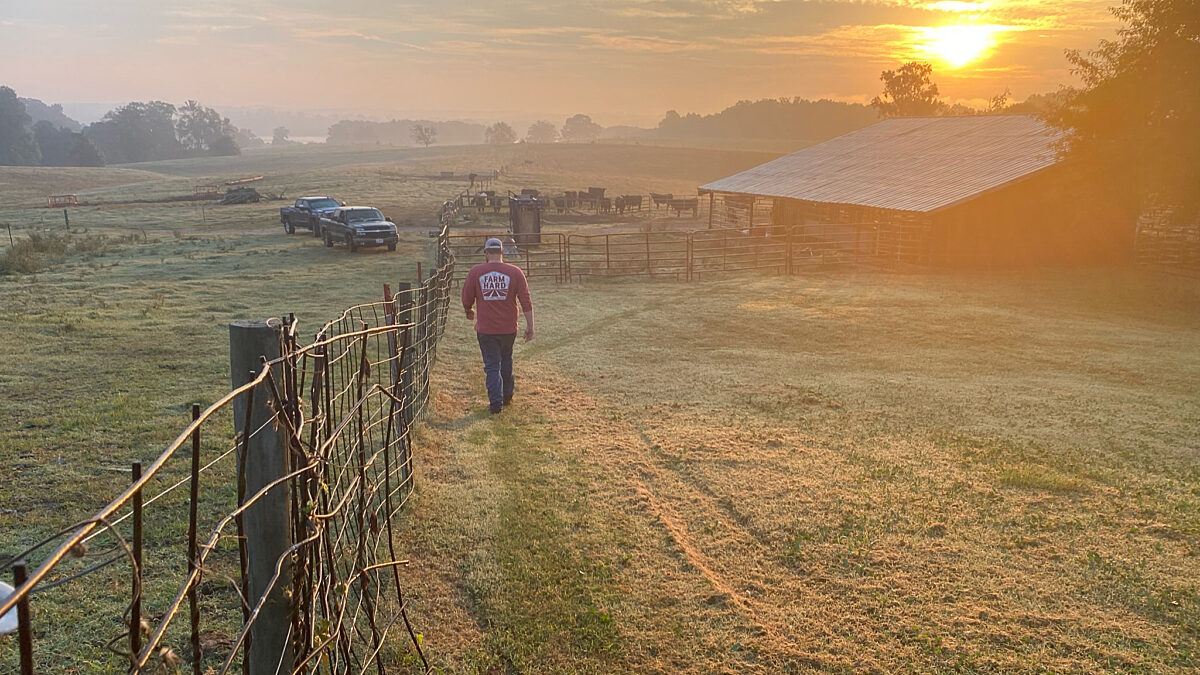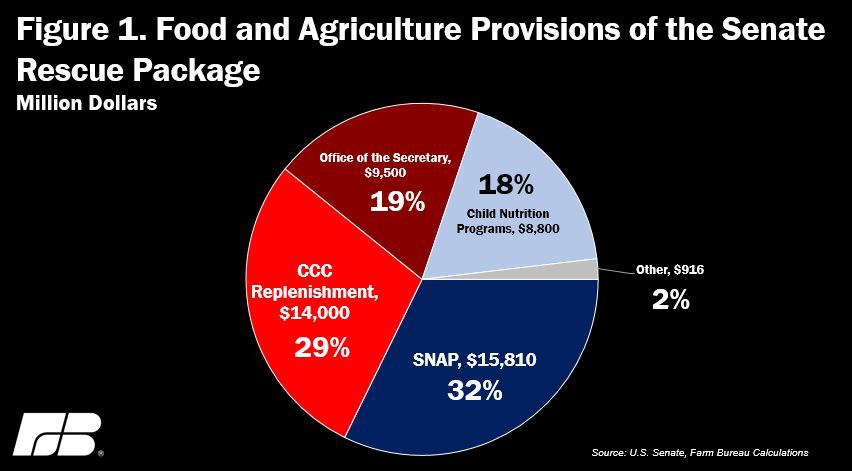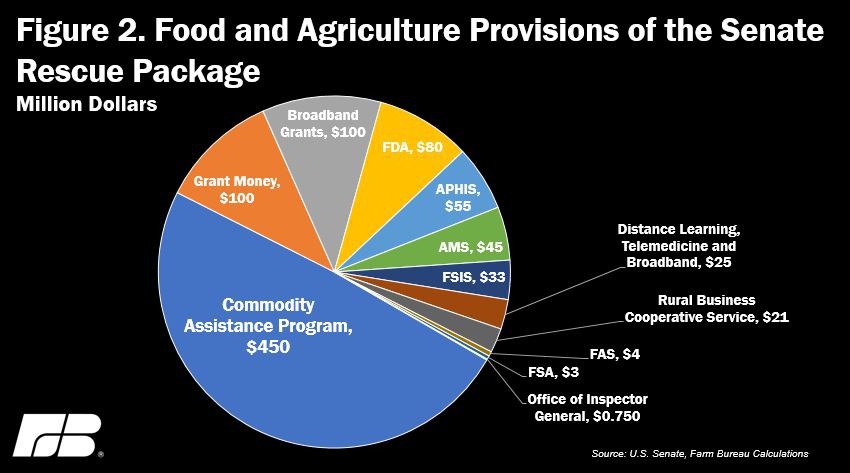What’s in the CARES Act for Food and Agriculture
TOPICS
Covid-19
photo credit: AFBF Photo, Mike Tomko
John Newton, Ph.D.
Former AFBF Economist
In response to the COVID-19 pandemic that has roiled the U.S. economy, the Senate passed the Coronavirus Aid, Relief, and Economic Security Act. In addition to direct payments to individuals of up to $1,200, extended unemployment benefits and federal loan guarantees, the $2 trillion CARES Act provides a number of food- and agriculture-related benefits, including funding to ensure children and low-income families have continued access to nutritious, affordable food and to ensure farmers have the financial resources they need to offset the more immediate economic impacts of the virus. Today’s article reviews the food and agriculture-related provisions of the CARES act.
For the agriculture-related provisions, the Office of the Secretary of the Department of Agriculture received $9.5 billion, approximately 19% of the total food and agriculture provisions, to provide financial support to farmers and ranchers impacted by coronavirus. The funding is allocated specifically for specialty crops, producers who supply local food systems and farmers’ markets, restaurants and schools, livestock producers, i.e., cattlemen and women, and dairy farmers.
In addition to the $9.5 billion, the Commodity Credit Corporation was replenished with $14 billion – 29% of the total funding amount for agriculture. The CCC is the funding mechanism for agricultural programs such as Price Loss Coverage and Dairy Margin Coverage. The CCC bolsters commodity and income support programs, natural resources conservation programs, disaster assistance programs and most recently the Market Facilitation Program. The $14-billion replenishment is for fiscal year 2020, so that’s in addition to the second and third tranche of MFP payments, as well as farm bill payments made last fall. This replenishment will allow USDA to develop new support programs to assist agricultural producers and potentially help agribusinesses such as ethanol plants (Ethanol Plants Pushed Toward Unprofitability).

Direct food- and agriculture-related provisions in the CARES Act total approximately $49 billion, or 2.45% of the $2-trillion measure. The act provides a total of $24.6 billion for domestic food programs – representing 50% of the total agricultural program funding in the bill. The act allocates $15.8 billion, or 32%, to improve access to supplemental nutrition programs in the event costs or participation exceed budget estimates. Of that total, $300 million is allocated for SNAP improvements in underserved areas such as Indian reservations or U.S. territories. In addition to enhanced funding for SNAP, child nutrition programs received $8.8 billion in additional funding – representing 18% of the total.
Combined, these four buckets represent 98% of the food- and agriculture-related provisions in the CARES Act. The remaining 2% of funding – approximately $916 million – is allocated for enhancing staffing and services in a number of key mission areas. The package includes funding for a variety of programs critical for rural America, including $100 million for USDA’s ReConnect pilot, $25 million for distance learning and telemedicine programs, $185 million to support rural critical access hospitals, rural tribal health and telehealth programs, and poison control centers, and $20.5 million to support an additional $1 billion of lending through USDA's Rural Development, Figure 2.

Summary
The Coronavirus Aid, Relief, and Economic Security Act provides the financial resources immediately necessary to ensure that children and low-income families continue to have access to healthy and affordable food. Additionally, the aid to farmers in this package, including funding for the CCC and the Office of the Secretary, will allow USDA to begin crafting an appropriate relief program for agriculture, including but not limited to support for specialty crop producers, producers supplying farmers’ markets, dairy farmers, and ranchers raising feeder and fed cattle. Given the sharp downturn in ethanol markets and downstream impact on corn prices across the Midwest, an aid package for these agribusinesses may also be warranted.
The COVID-19 pandemic is likely to have a long tail economically, and recovery will take time. The full extent of the economic damage to U.S. farmers, ranchers, agribusinesses and the many others involved in food production is unknown. Moreover, the ability for U.S. agricultural exports to recover and potentially meet the Phase 1 commitments is also unknown. If more resources ultimately prove necessary, our lawmakers and the administration have demonstrated their ability to make those resources available.
Trending Topics
VIEW ALL